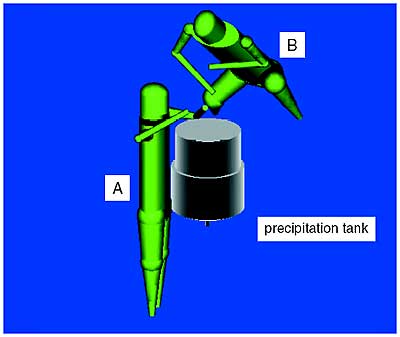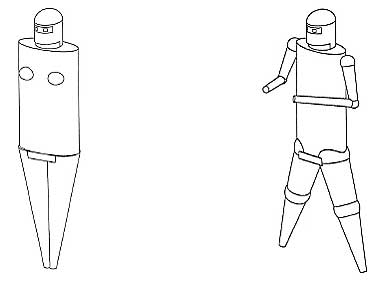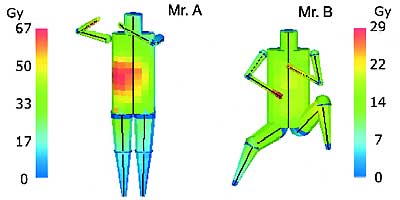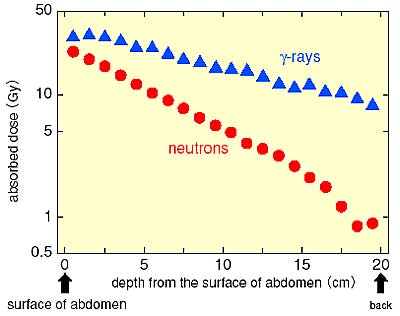The impetus and urgency for this research was a request from the medical team
that treated the heavily exposed JCO criticality accident victims. Two workers,
Mr. A and Mr. B, were heterogeneously exposed to neutrons and gamma-rays produced
by nuclear fission. The medical team required detailed information on dose distributions
to relate clinical observations of the skin and organs to the doses in the corresponding
portions of the body.
However, there was no way to provide this information quickly
since the available computational human model for dose calculation was for a standing
(upright) posture (Fig. 1-8a). To respond to this difficult request from the medical
team, we devised a way to analyze the dose distributions by developing the computational
human model with movable arms and legs shown in Fig. 1-8b. It enabled us to model
any of the complicated postures shown in Fig. 1-7. We incorporated the two models
representing the postures of workers A and B at the moment of exposure into a
computer code system that simulated criticality and radiation transport phenomena,
and analyzed the dose distributions in the skin (Fig. 1-9) and in the trunk (Fig.
1-10). The results of this analysis contributed significantly to the understanding
of the biological effects of high-dose exposure to neutrons and gamma-rays and
to the development of emergency medical treatment for radiation exposure victims. |



